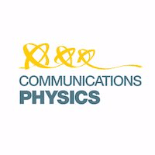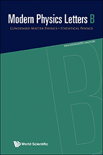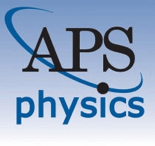
JOURNAL OF LOW TEMPERATURE PHYSICS
Scope & Guideline
Fostering innovation in low temperature experimental research.
Introduction
Aims and Scopes
- Low Temperature Phenomena:
Research exploring the fundamental properties and behaviors of materials and systems at low temperatures, including superfluidity, superconductivity, and quantum phase transitions. - Quantum Fluids and Solids:
Investigations into the unique properties of quantum fluids, such as liquid helium, and solid states under low-temperature conditions, including studies on their thermodynamic and transport properties. - Cryogenic Detector Technologies:
Development and optimization of cryogenic detectors and measurement techniques, particularly for applications in astrophysics, particle physics, and quantum information. - Magnetocaloric Effects:
Studies on the magnetocaloric effect and its applications, providing insights into magnetic materials and their thermal behavior under varying magnetic fields. - Quantum Information and Entanglement:
Research focusing on quantum information processes, including entanglement phenomena in low-temperature systems and their implications for quantum computing. - Advanced Materials for Low Temperature Applications:
Exploration of new materials and composites specifically designed for low-temperature applications, including their superconducting properties and thermal management.
Trending and Emerging
- Quantum Computing and Quantum Technologies:
An increasing number of papers focus on the application of low-temperature physics in quantum computing and quantum information technologies, emphasizing the importance of superconducting qubits and quantum sensors. - Advanced Cryogenic Detection Methods:
Emerging themes in the development of advanced cryogenic detectors, especially transition-edge sensors (TES) and kinetic inductance detectors (KIDs), showcase innovations in measurement techniques for astrophysical and particle physics applications. - Topological Phases of Matter:
There is a growing interest in the study of topological phases and their implications at low temperatures, reflecting a broader trend in condensed matter physics towards understanding exotic states of matter. - Hybrid Quantum Systems:
Research into hybrid systems that combine different quantum technologies, particularly superconducting qubits coupled with other quantum platforms, is gaining momentum, indicating a trend towards multifunctional quantum devices. - Quantum Materials and Novel Superconductors:
Investigation of new materials with unconventional superconducting properties is on the rise, particularly those that exhibit high-temperature superconductivity or unique magnetic behaviors.
Declining or Waning
- Classical Thermodynamics:
There appears to be a diminishing emphasis on classical thermodynamic studies at low temperatures, as more research focuses on quantum effects and new materials rather than traditional thermodynamic properties. - Conventional Superconductivity Studies:
Research specifically centered on conventional superconductivity has seen a decline, possibly due to the increasing interest in high-temperature superconductors and novel superconducting materials. - Static Quantum Systems:
Studies of static or equilibrium properties of quantum systems are less frequently published, as dynamic and non-equilibrium phenomena have become more prominent in current research. - Cryogenic Fluid Dynamics:
Research focusing on the fluid dynamics of cryogenic systems is becoming less common, as interdisciplinary approaches integrating fluid dynamics with quantum and condensed matter physics are gaining more traction. - Basic Low Temperature Measurement Techniques:
There is a noticeable reduction in publications related to foundational low-temperature measurement techniques, as the field advances towards more sophisticated and specialized detection methods.
Similar Journals

Condensed Matter
Fostering Collaboration in Condensed Matter ResearchCondensed Matter is a leading open-access journal dedicated to the diverse and dynamic field of condensed matter physics, published by MDPI since 2016. With its base in Switzerland, the journal aims to present a platform for researchers and professionals to share innovative findings and advancements in areas such as electronic, optical, and magnetic materials. As of 2023, it is ranked in the Q3 category for both condensed matter physics and electronic, optical, and magnetic materials, a testament to its relevance and growth within the scientific community. Researchers will find valuable insights through its accessible format, fostering collaboration and knowledge dissemination within this interdisciplinary field. With a commitment to enhancing the global dialogue in condensed matter studies, Condensed Matter invites contributions that explore theoretical and experimental approaches, thus pushing the boundaries of understanding in this crucial area of science.

JETP LETTERS
Pioneering Research, Inspiring InnovationJETP LETTERS, published by MAIK NAUKA/INTERPERIODICA/SPRINGER, is a prestigious journal in the field of physics and astronomy, which plays a pivotal role in disseminating groundbreaking research and innovative ideas since its inception in 1969. With an ISSN of 0021-3640 and an E-ISSN of 1090-6487, this journal aligns well with the interests of both seasoned researchers and emerging scholars, having achieved a 2023 category rank of Q3 for miscellaneous topics within physics and astronomy. Located in the United States at 233 SPRING ST, NEW YORK, NY 10013-1578, JETP LETTERS serves as a critical resource for its readership, offering exclusive insights and advancements across diverse areas of physics. While not open access, it hosts a collection of articles that refine theoretical approaches and experimental methods, providing both knowledge and inspiration to professionals and academics seeking to make impactful contributions to the scientific community. The journal’s quality is reflected in its Scopus ranking, where it stands at 39 out of 81 in the multidisciplinary category, placing it in the 52nd percentile, thus underscoring its significance and reliability as a scholarly outlet.

CHINESE PHYSICS LETTERS
Where Cutting-Edge Research Meets Swift PublicationChinese Physics Letters is a prestigious journal published by IOP Publishing Ltd, based in the United Kingdom. Since its inception in 1984, the journal has served as a vital platform for disseminating impactful research in the field of physics, achieving a noteworthy Q1 ranking in the category of Physics and Astronomy (miscellaneous) as of 2023. Renowned for its rapid publication process, this journal is dedicated to providing a forum for high-quality, concise articles that address innovative theoretical and experimental findings relevant to both the academic community and industry practitioners. With an impressive Scopus rank of #52 out of 243, placing it in the 78th percentile, Chinese Physics Letters continues to influence the global physics landscape. Researchers, professionals, and students alike find this journal indispensable for staying abreast of the latest developments and trends in physics.

Optoelectronics Letters
Fostering Innovation in Light and MatterOptoelectronics Letters, published by Tianjin University of Technology, is an esteemed platform for the dissemination of innovative research within the fields of atomic and molecular physics, optics, condensed matter physics, and electrical engineering. With its inaugural publication in 2007 and a convergence period extending to 2024, this journal aims to foster scholarly communication and collaboration among researchers and professionals. Although currently lacking an impact factor, it serves a vital niche in the rapidly evolving field of optoelectronics, evidenced by its categorization in the fourth quartile for various physics disciplines and the third quartile in electrical and electronic engineering. Given its ranking dynamics in Scopus, it is an emerging choice for authors seeking to convey their findings on electronic, optical, and magnetic materials. Researchers, students, and industry professionals alike can benefit from its open access options, encouraging a broad dissemination of cutting-edge knowledge that is essential in the advancement of technology and materials science.

LOW TEMPERATURE PHYSICS
Innovating Insights at Reduced TemperaturesLOW TEMPERATURE PHYSICS, published by AIP Publishing, is a premier academic journal dedicated to the exploration and dissemination of research in the field of low-temperature physics. With an ISSN of 1063-777X and an E-ISSN of 1090-6517, this journal serves as a vital resource for researchers, professionals, and students eager to delve into the intricacies of thermal phenomena at reduced temperatures. Operating under a structured peer-review process, it presents high-quality, original research articles, reviews, and brief communications, all aimed at advancing our understanding of this specialized domain. Although it does not provide open access, the journal's presence in the Q3 category of Physics and Astronomy (miscellaneous) and its ranking within the 27th percentile reflect its commitment to impactful, cutting-edge research. With a publication timeline spanning from 1997 to 2024, LOW TEMPERATURE PHYSICS remains an essential platform for sharing innovative findings and fostering collaboration among physicists worldwide.

Communications Physics
Exploring the universe of scientific communication.Communications Physics is a premier open access journal published by Nature Portfolio, dedicated to disseminating high-quality research in the field of Physics and Astronomy. Since its inception in 2018, the journal has rapidly established itself as a vital platform for innovative scientific communication, boasting an impressive Impact Factor and achieving Q1 status in the 2023 category of Physics and Astronomy (miscellaneous). With a Scopus rank of #31 out of 243, placing it within the 87th percentile, Communications Physics attracts a global audience of researchers, professionals, and students eager to engage with cutting-edge findings. The journal supports open access, ensuring that research is freely available to the public, which enhances its visibility and encourages broader discussions within the scientific community. Located in Berlin, Germany, Communications Physics aims to bridge the gap between various disciplines within physics, fostering interdisciplinary collaboration and inspiring future research endeavors.

MODERN PHYSICS LETTERS B
Driving rapid dissemination of high-impact physics research.MODERN PHYSICS LETTERS B, published by World Scientific Publishing Co Pte Ltd, is a pivotal journal in the fields of Condensed Matter Physics and Statistical and Nonlinear Physics. With an ISSN of 0217-9849 and an E-ISSN of 1793-6640, this journal has been a prominent platform for innovative physics research since its inception in 1996, catering to a global audience of researchers, professionals, and students alike. Its impact is reflected in its Scopus rankings, with a commendable position in the 65th percentile for Statistical and Nonlinear Physics and the 54th percentile for Condensed Matter Physics. Despite its classification in the Q3 quartile, MODERN PHYSICS LETTERS B is dedicated to advancing knowledge through rapid dissemination of high-quality research, thus playing a critical role in shaping future developments in its disciplines. Published in Singapore, the journal encourages contributions that address contemporary challenges and breakthroughs in physics, fostering an engaged scholarly community.

NEW JOURNAL OF PHYSICS
Bridging theory and practice in contemporary physics.NEW JOURNAL OF PHYSICS, published by IOP Publishing Ltd, is a prestigious open-access journal that has been at the forefront of the physics community since its inception in 1998. With an impact factor that places it in the Q1 category of Physics and Astronomy (miscellaneous) and a commendable ranking of #49 out of 243 in the general physics and astronomy category according to Scopus, this journal is recognized for its significant contribution to advancing research in the field. The journal caters to a broad scope of topics, providing a platform for the dissemination of cutting-edge research findings and innovative theoretical explorations. Operating from the United Kingdom, it offers a truly international perspective, making its contents accessible and impactful to a global audience. With robust open-access options, the NEW JOURNAL OF PHYSICS ensures that research findings are freely available, promoting collaboration and knowledge sharing among researchers, professionals, and students alike. This commitment to accessibility, combined with its high-quality content, makes it an essential resource for anyone engaged in the physics community.

PHYSICAL REVIEW A
Pioneering Research in Molecular DynamicsPHYSICAL REVIEW A, published by the American Physical Society, is a leading journal in the field of Atomic and Molecular Physics and Optics, boasting a Q1 category ranking in its area for 2023. With an ISSN of 2469-9926 and an E-ISSN of 2469-9934, this journal plays a pivotal role in disseminating high-quality research findings, theories, and methodologies that shape current understanding and advancements in the discipline. Although not an open-access journal, it remains highly accessible to professionals and academia through institutional subscriptions. The journal's impactful contributions are evident from its Scopus rank of #70 out of 224 in the field, placing it in the 68th percentile for scholarly impact. As a hub of innovative research and a vital resource for both students and seasoned researchers alike, PHYSICAL REVIEW A remains essential for those seeking to stay abreast of breakthroughs in atomic and molecular studies, as well as optics and photonics.

PHYSICS-USPEKHI
Illuminating Insights in Physics ResearchPHYSICS-USPEKHI, published by Uspekhi Fizicheskikh Nauk, is a prominent peer-reviewed journal in the field of physics and astronomy, reaching researchers and professionals since its inception in 1993. With an ISSN of 1063-7869 and an E-ISSN of 1468-4780, this esteemed journal has been classified as Q2 in the Physics and Astronomy category based on the 2023 quartiles, ranking 74 out of 243 journals in its Scopus classification, placing it in the 69th percentile. Although currently not an open access journal, it provides invaluable insights and advancements in the field, fostering an environment for scholarly exchange and collaborative research. Based in Moscow, Russia, PHYSICS-USPEKHI continues to shape the landscape of theoretical and experimental physics, inviting submissions that contribute to its rich legacy of high-impact scientific discourse.